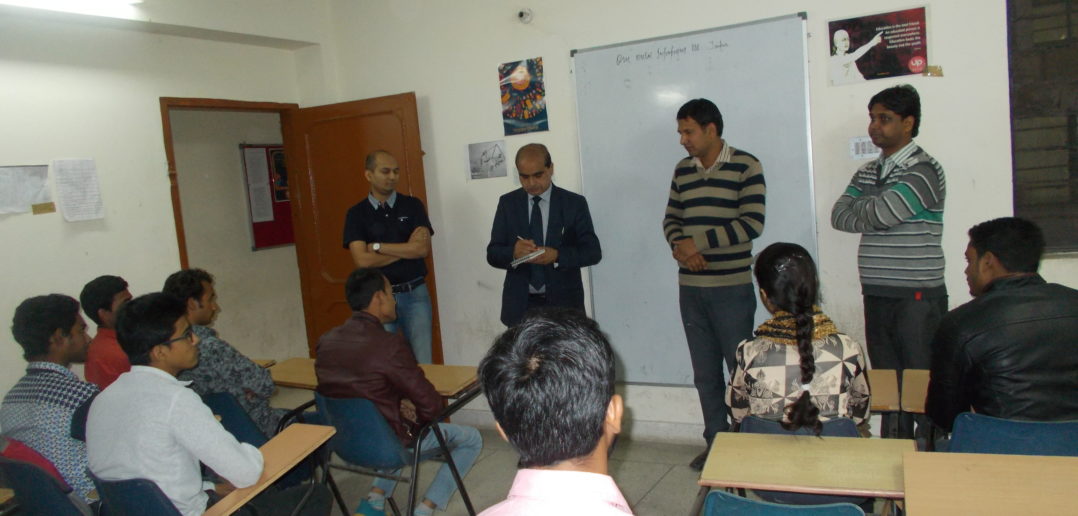Upskill was started as a social enterprise about four and half years ago, and the idea was to provide skill training to underprivileged youth across the country. Today, Upskill has evolved as a key startup in skills and livelihood management. In this Skill Story Mansi Agarwal, CEO, Upskill Management Services Ltd, tells us how the social enterprise has made considerable difference in the lives of many thanks to the technology-enabled innovative approaches training, suitable and sustainable job placements. Let’s read on…
 The reason we wanted to set up Upskill as a social enterprise and not as a not-for-profit was, we believed that, if we are creating social impact, the business should be sustainable in itself. This is because, only a sustainable, stable business can motivate people who are working in the organization to be able to continue the good work and achieve the goals.
The reason we wanted to set up Upskill as a social enterprise and not as a not-for-profit was, we believed that, if we are creating social impact, the business should be sustainable in itself. This is because, only a sustainable, stable business can motivate people who are working in the organization to be able to continue the good work and achieve the goals.
The primary vision of the organisation is that we should not limit ourselves to skill-based training, but look into livelihood management strategies. This needs a long-term, sustainable model, where, once the youth are able to enter formal employment and they are able continue in that, they should be able to generate recurring, stable income and lead better lives. The first step for livelihood management plan is to get the youth to the training center and give them the skills required for getting their first job.

Looking back at how Upskill started
The company was started by a group of students at the Kellogg School of Managament in Chicago of which my husband and I were a part.. We also won couple of business competitions based on this idea and the prize money from these competitions was used as the seed capital.
Since we received this international recognition, we realised that the idea had substantial business potential. We then decided to return to India and do a pilot project. Our first pilot project was done in Kundesar, Bihar. Originally, it was an idea for a financial model to fund students and once the students took the training and got the job, there would be a cut from their salary for paying back. But after we ran the project in Kundesar, we realised there were other socio-economic reasons for the students to quit a job. Besides their cultural mindset, accessibility of the training institute was a major issue for attrition.
Technology interventions in skill-based training

When NSDC was formed and free training programs were announced, we realised people were still using old methods of training such as books for teaching hard-core technical skills. Some of the students could not even read and write, so it was difficult for them to study the technical skills through books. The pedagogy and training delivery had to meet adult learning needs.
We set up skill training centres in Rajasthan and Gujarat. We started working with the Ministry of Rural Development and Ministry of Minority Affairs in these two states. Through these two ministries, we were able to train about 4500 students across our training centres in 9 different locations in these two states. The training has ranged from automobile mechanic to soft skills, electrician to sewing operators, and so on.

We have trained 4500 people so far, of which 3300 are placed in various jobs. Currently, a project to train 500 more people is underway in Rajasthan. Our target is to train another 5000 people in the next 2 years.
Proximity to jobs and workplace
Once we identify the region in which we are going to work, we do demographic analysis and job mapping with the jobs available in that area, as most people don’t want to migrate or travel. They want jobs in their vicinity. There is no point in training 200 sewing operators, if there were not many sewing operator jobs in that area. So we had to do small batches of multiple trades or job roles. It was more demand-driven than supply-driven. It became a community approach rather than a trade-based approach. Our process also includes aptitude tests for students in schools and colleges of an area to arrive at scientific conclusions about the gaps in the skill level and gap at the employers’ level at the micro level.
Most of our courses are NSQF compliant. However, for some courses under CSR, we haven’t NSQF since some skills may not have been defined. We have also been able to digitise a lot of our course content and made it experiential to suit the adult learners. This also makes it highly interactive and engaging for sustaining student motivation till course completion.
Meeting aspirational and realistic expectations
Why are people not taking up the jobs even after they are trained? Questions like these needed an in-depth analysis and we found that the problem could be addressed at the mobilization stage. We had to set right expectations regarding the job role and salary without overselling the job, particularly in the case of informal sector employment. We also make use of videos of day-in-the-life-of an employee in a particular trade. The mobiliser can show these videos and create a realistic expectation. Sometimes, non-aspirational jobs become aspirational through these videos. Our technology platform, Node, deals with issues such as mismatch of aspirations and expectations during mobilisation. Node is a one-stop solution for data collection and tracking, apart from connecting the alumni, the mentors and the jobs.













